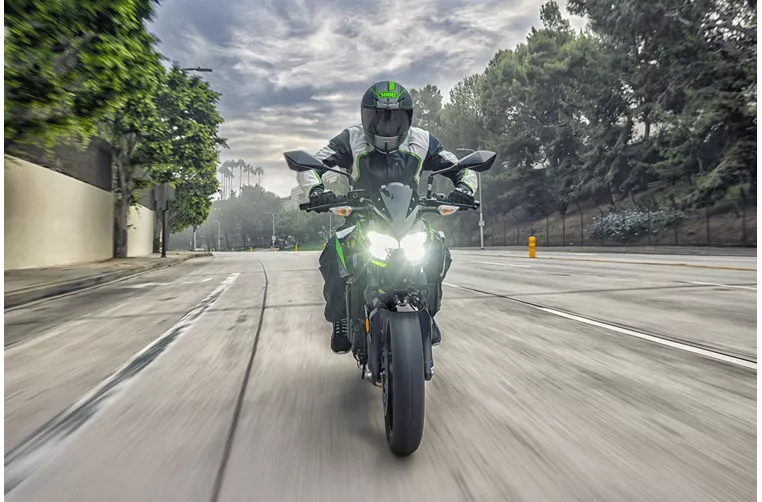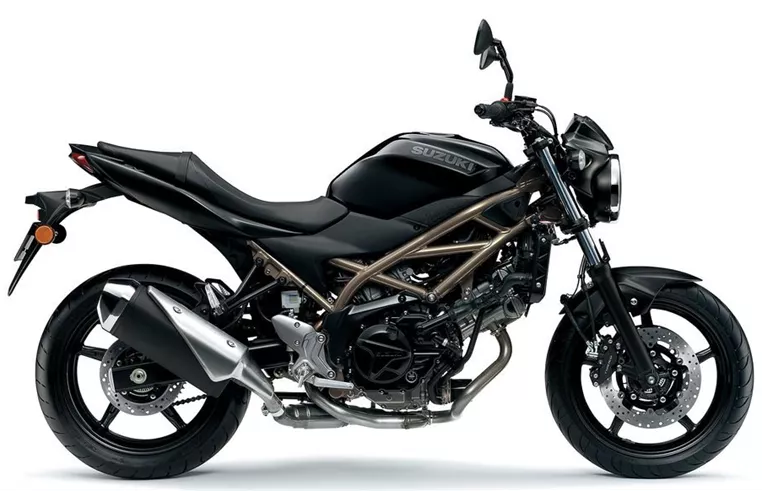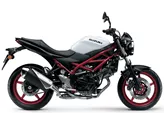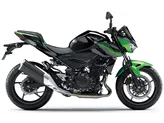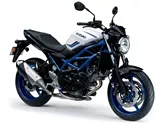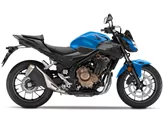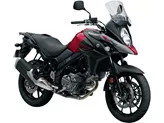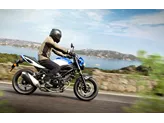Kawasaki Z 400 2023 vs. Suzuki SV 650 2021
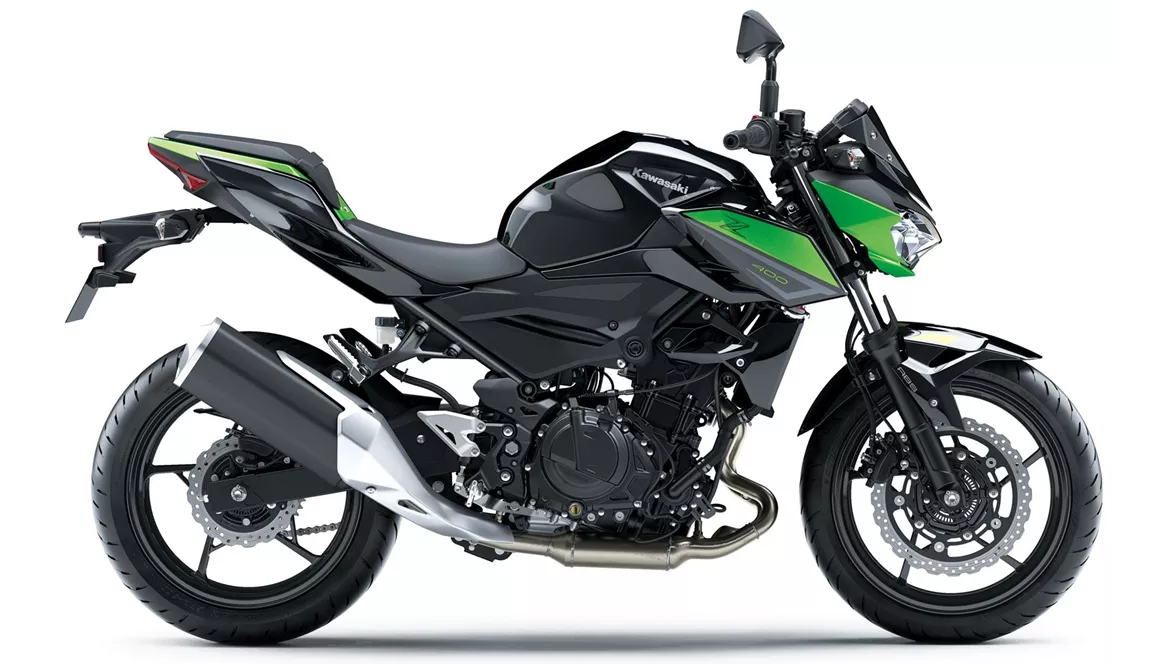
Kawasaki Z 400 2023
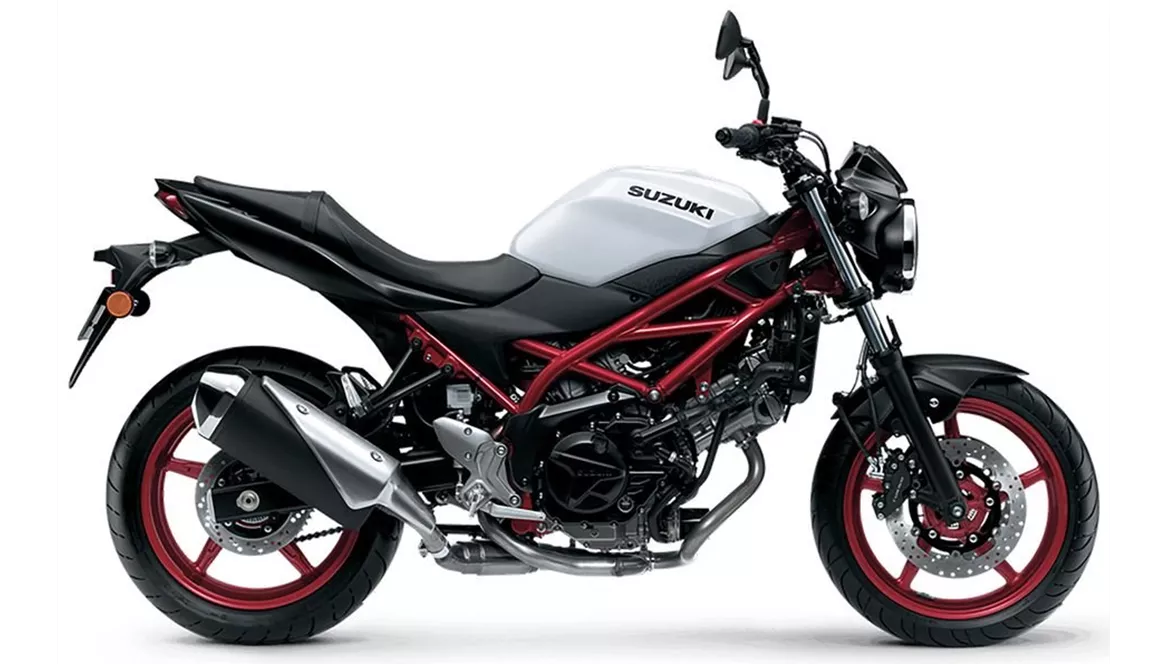
Suzuki SV 650 2021
Overview - Kawasaki Z 400 2023 vs Suzuki SV 650 2021
The Kawasaki Z 400 2023 and the Suzuki SV 650 2021 are both naked bikes that offer a thrilling riding experience. However, there are several differences between the two models that make them unique in their own ways.
In terms of engine performance, the Suzuki SV 650 2021 takes the lead with its V2 powerplant that delivers 73 HP of power and 64 Nm of torque. On the other hand, the Kawasaki Z 400 2023 offers a slightly less powerful engine with 45 HP of power and 37 Nm of torque. While the Suzuki SV 650 2021 provides a more powerful and characterful engine, the Kawasaki Z 400 2023 still offers a lively and enjoyable riding experience.
Both bikes feature a liquid-cooled engine and fuel injection systems, ensuring efficient and reliable performance. They also have a similar suspension setup, with telescopic forks at the front and a swing arm with a monoshock at the rear. The suspension on both models can be adjusted for preload, allowing riders to customize their riding experience.
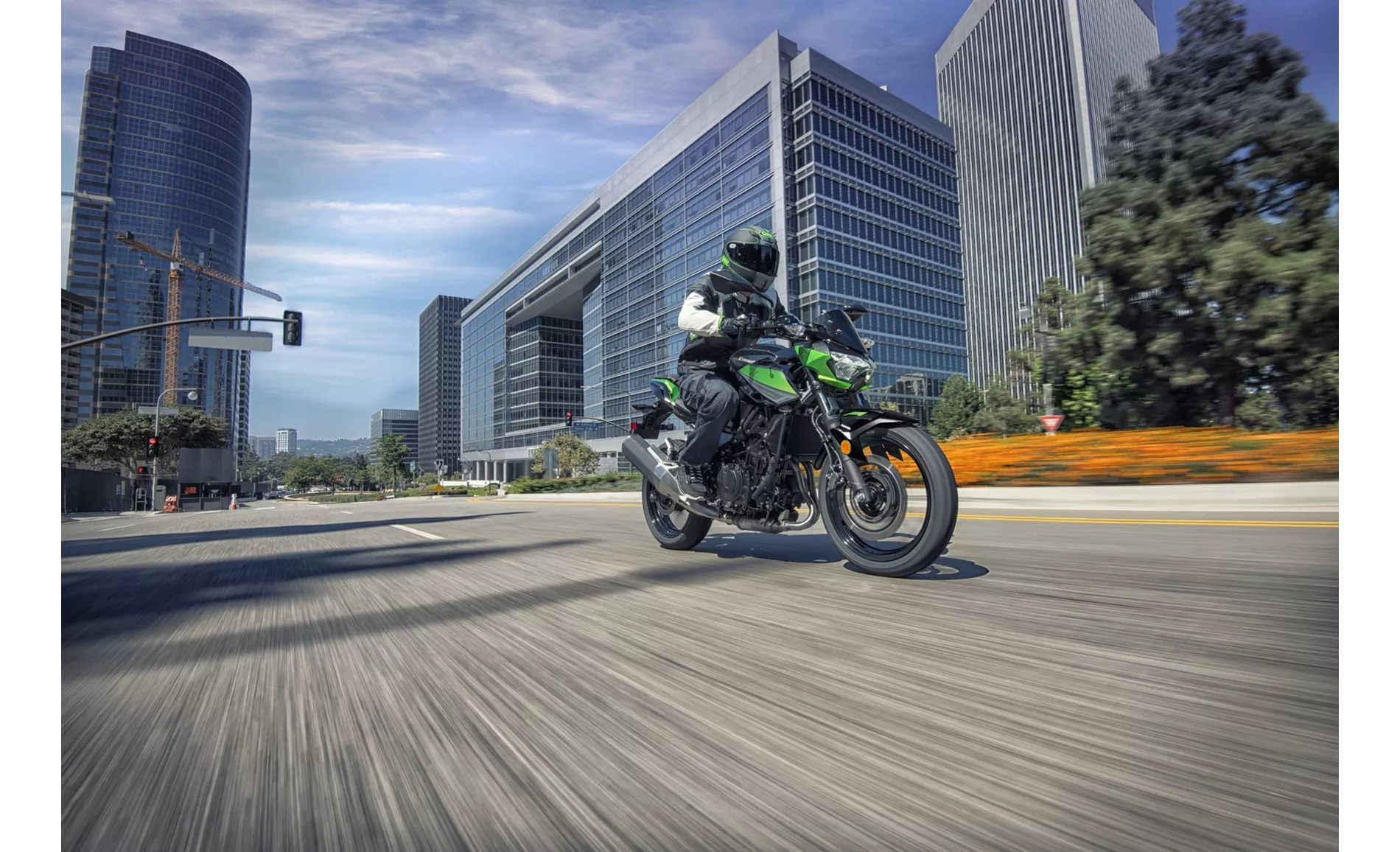
Kawasaki Z 400 2023
In terms of chassis, both the Kawasaki Z 400 2023 and the Suzuki SV 650 2021 feature a steel tubular frame, providing stability and durability. The Kawasaki Z 400 2023 has a slightly lighter weight with a kerb weight of 167 kg, while the Suzuki SV 650 2021 weighs 200 kg. This weight difference may contribute to the Kawasaki Z 400 2023's easy handling and maneuverability.
When it comes to braking, the Suzuki SV 650 2021 has the advantage with double disk brakes at the front, compared to the Kawasaki Z 400 2023's single disk brake. The Suzuki SV 650 2021 also has four-piston calipers, providing stronger braking power. However, both models are equipped with ABS, ensuring safe and controlled braking.
In terms of dimensions, the Suzuki SV 650 2021 has a longer wheelbase of 1445 mm compared to the Kawasaki Z 400 2023's 1370 mm. This longer wheelbase may contribute to the Suzuki SV 650 2021's stability at higher speeds. Both bikes have the same seat height of 785 mm, providing a comfortable seating position for riders of various heights.
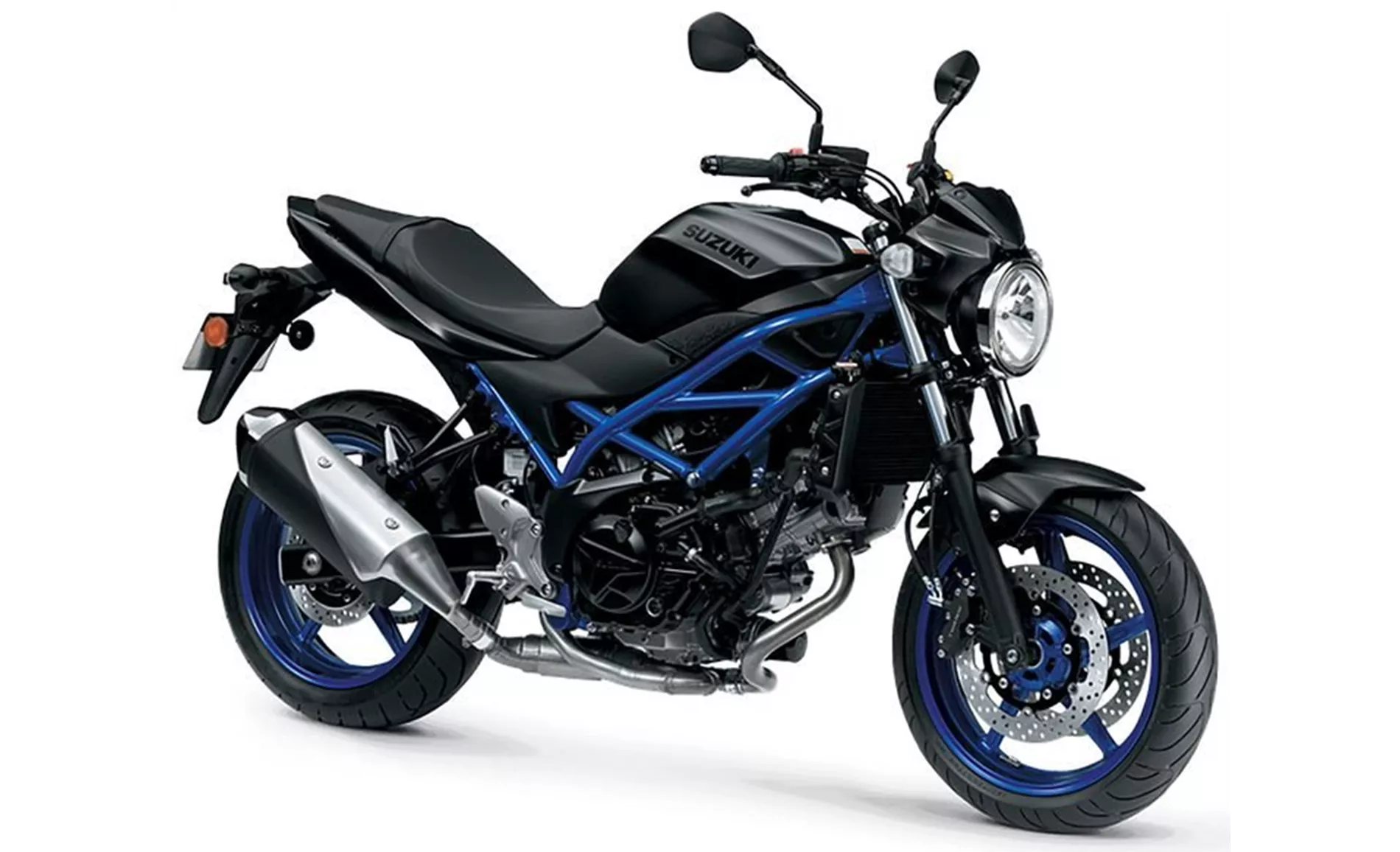
Suzuki SV 650 2021
In terms of aesthetics, the Kawasaki Z 400 2023 has a more grown-up look, while the Suzuki SV 650 2021 has a timeless design. Both bikes are well-crafted with high-quality workmanship, ensuring durability and longevity.
In terms of weaknesses, the Kawasaki Z 400 2023 has non-adjustable levers, which may limit customization options for riders. On the other hand, the Suzuki SV 650 2021 has a brake that requires manual force, which may be less convenient for some riders. Additionally, the Suzuki SV 650 2021 lacks advanced electronics apart from ABS and its instruments are moderately readable.
In conclusion, both the Kawasaki Z 400 2023 and the Suzuki SV 650 2021 offer exciting riding experiences with their powerful engines, stable chassis, and easy handling. The Suzuki SV 650 2021 provides a more powerful engine and better braking performance, while the Kawasaki Z 400 2023 offers a lighter weight and a more grown-up look. Ultimately, the choice between the two models will depend on the rider's preferences and priorities.
Technical Specifications Kawasaki Z 400 2023 compared to Suzuki SV 650 2021
Pros and Cons in comparison
Pros and Cons in comparison
Kawasaki Z 400 2023
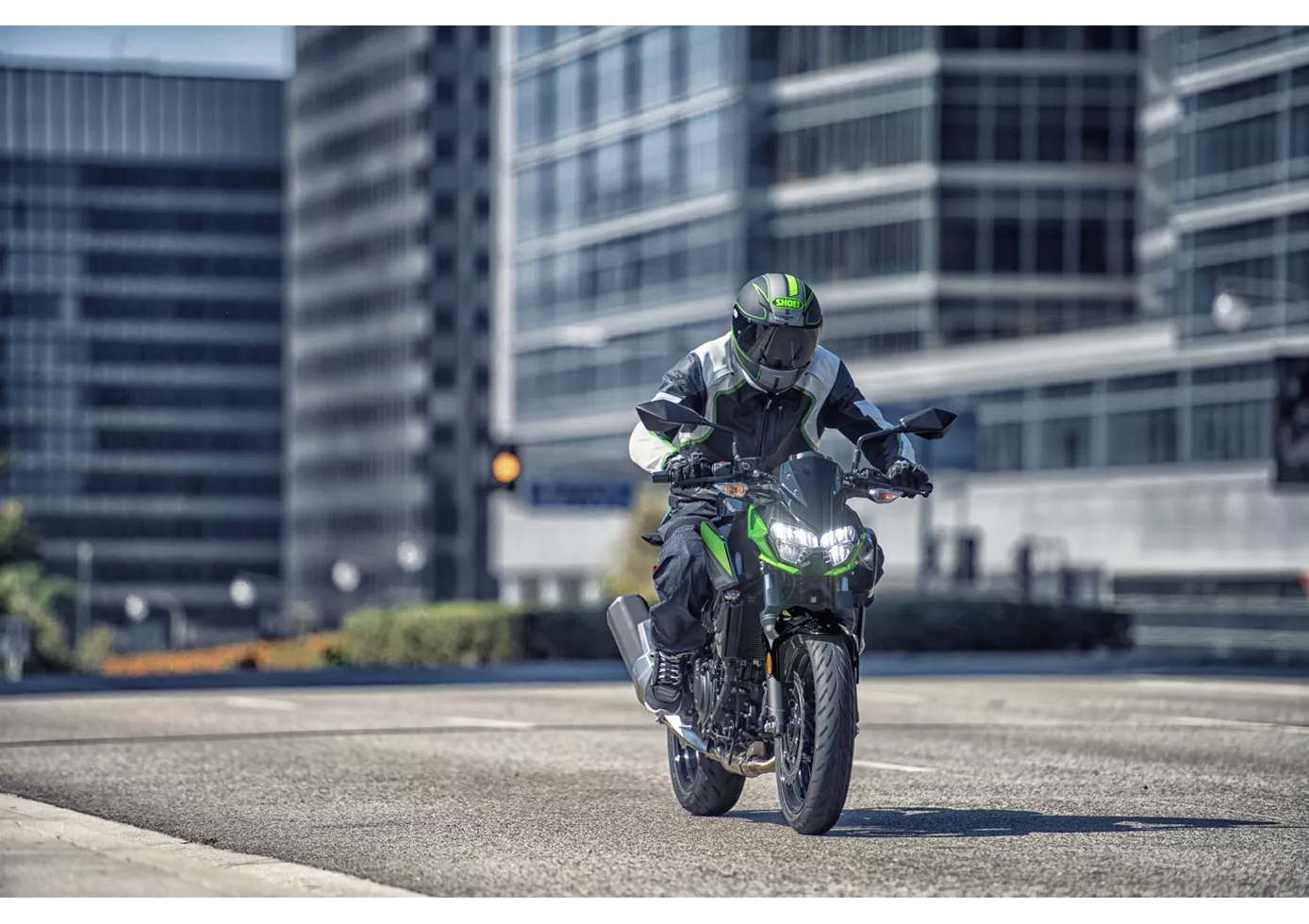
A cool and sensible entry into the A2 class. The Kawasaki Z400 scores points all along the line with its instinctive handling and the in-line two-cylinder, which convinces with good response and sufficient power. You can't go wrong with this naked bike and you can overlook the fact that the levers are not adjustable - after all, costs have to be saved somewhere.
Suzuki SV 650 2021
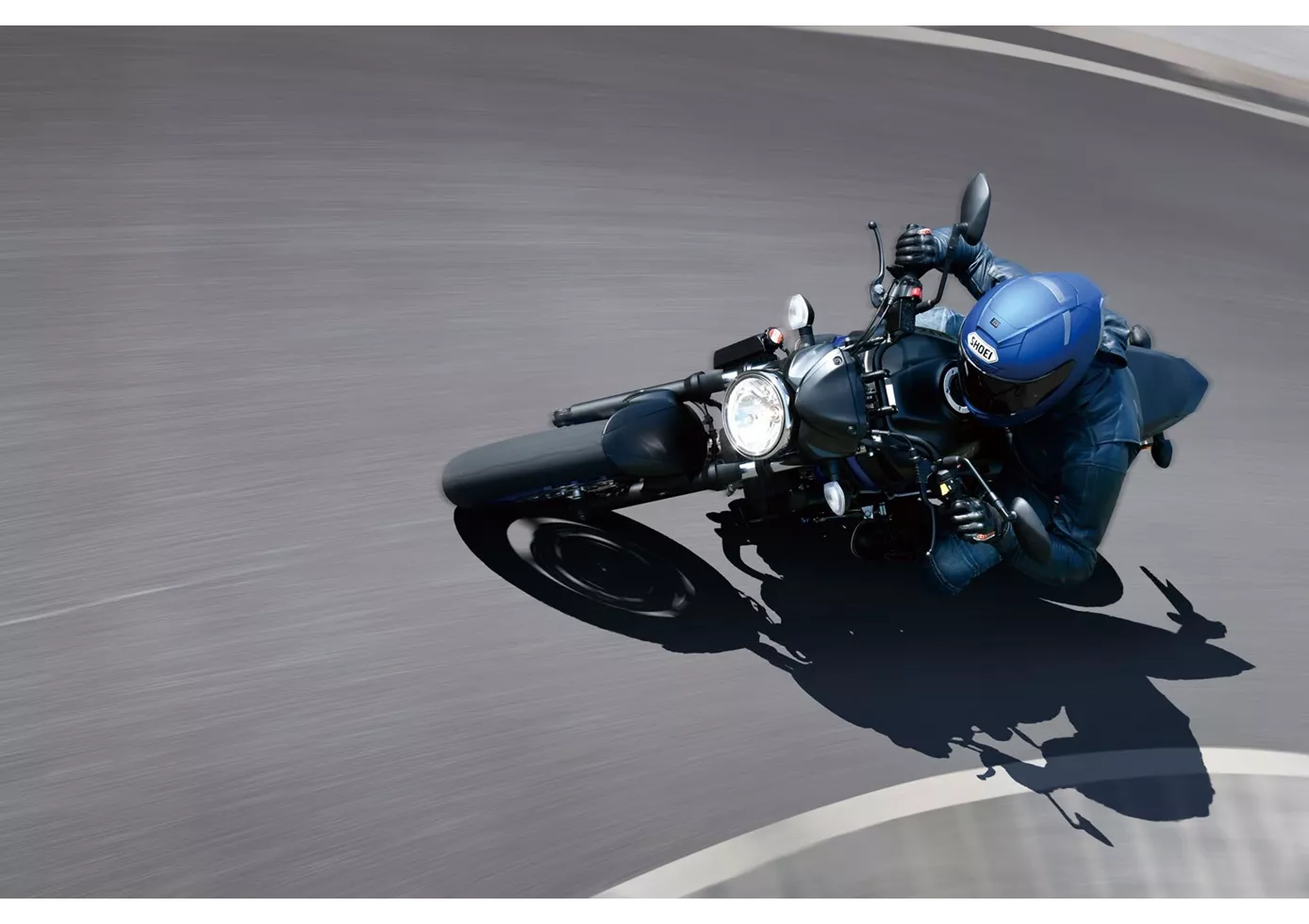
Not much has changed on the Suzuki SV 650 compared to its predecessor, five years ago. The engine has been updated to Euro5 and is now even more mature, which fits in perfectly with the rest of the package. The SV 650 doesn't want to scare anyone, especially beginners. The chassis makes a solid, unagitated impression, the brakes require a lot of manual force to prevent unexpected overbraking. The look is timeless on the one hand, but on the other hand some components are really a bit outdated. On the other hand, the price is fair, as usual for Suzuki.
Price Comparison Avarage Market Price Kawasaki Z 400 vs Suzuki SV 650
There are a few key differences between a Kawasaki Z 400 2023 and a Suzuki SV 650 2021. In terms of price, the actual average prices of both motorbikes are almost the same. Compared to Suzuki SV 650 2021 there are more Kawasaki Z 400 2023 bikes available on the 1000PS.de Marketplace, specifically 89 compared to 13. It takes less time to sell a Suzuki SV 650 with 111 days compared to 123 days for the Kawasaki Z 400. Since model year 2019 1000PS.de editors have written 8 reviews for the Kawasaki Z 400 and 25 reviews for the Suzuki SV 650 since model year 2005. The first review for the Kawasaki Z 400 was published on 02/10/2018 and now has more than 23,200 views. This compares to more than 14,200 views for the first review on Suzuki SV 650 published on 26/09/2008.
